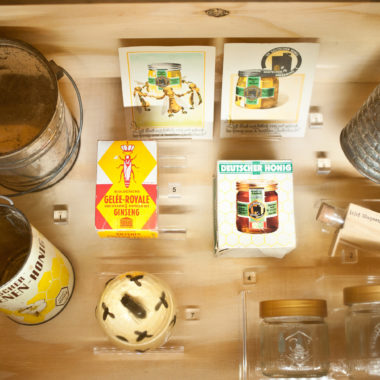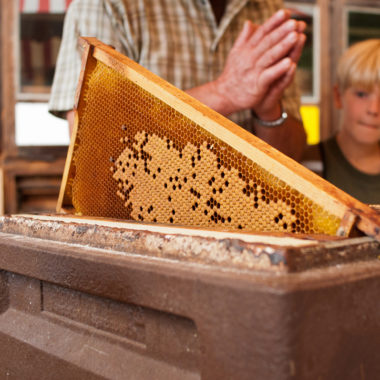
Apiary from Mammolshain

Built: 1937
Dismantled: 2009/10
Reassembled: 2011
This simple utilitarian wooden shack with its tar paper-covered single-pitched roof and a canopy to protect it from inclement weather was built by Peter Fuchs, a carpenter and beekeeper, in his own garden. It was designed to house a maximum of 36 colonies. In 1938, the front on the eaves side was already altered and given the design it has today, with glass panes and colour panels, with the latter helping the bees finding the way to their hive. The advent of the modern hives, which were serviced from the top, made the alterations necessary.
This apiary, impressive for a building of its type, belongs to the internationally renowned Bee Research Institute in Oberursel where Peter Fuchs served as its first beekeeper from 1937 to 1954. After the Second World War, he and Scientific Director Hugo Gontarski made wooden toys in the institute’s basement at night and sold them in the nearby town of Oberursel to help finance the research facility. In the early 1970s, the apiary was moved within Mammolshain to a chestnut grove a few hundred metres away, for which the village had been known since the 18th century. The floor slab constructed at the time was bigger than the building itself and consequently rainwater could not run off and permeated the timber. This is why about 50 percent of the wood had to be replaced when the apiary was transferred to the museum wall by wall in late 2009/early 2010. It is one of the few buildings in the museum which were largely translocated. Inside, the apiary features a stacks display with beekeeping tools of the last 150 years.

Mit dem Laden der Karte akzeptieren Sie die Datenschutzerklärung von Google.
Mehr erfahren





